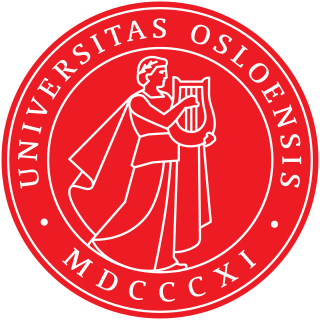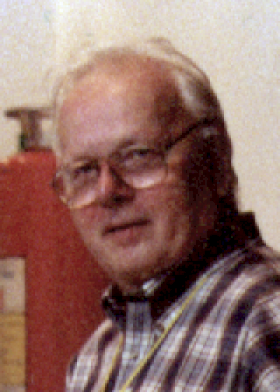
Simula is the name of two simulation programming languages, Simula I and Simula 67, developed in the 1960s at the Norwegian Computing Center in Oslo, by Ole-Johan Dahl and Kristen Nygaard. Syntactically, it is an approximate superset of ALGOL 60, and was also influenced by the design of Simscript.

The University of Oslo is a public research university located in Oslo, Norway. It is the highest ranked and oldest university in Norway. It is consistently ranked among the top universities in the world and as one of the leading universities of Northern Europe; the 2022 Academic Ranking of World Universities ranked it the 67th best university in the world and the third best in the Nordic countries. In 2023, both the QS World University Rankings and the Times Higher Education World University Rankings listed the university as the highest ranked Norwegian university, placing it 101st and 126th in the world respectively.
A computer simulation language is used to describe the operation of a simulation on a computer. There are two major types of simulation: continuous and discrete event though more modern languages can handle more complex combinations. Most languages also have a graphical interface and at least a simple statistic gathering capability for the analysis of the results. An important part of discrete-event languages is the ability to generate pseudo-random numbers and variants from different probability distributions.

Ole-Johan Dahl was a Norwegian computer scientist. Dahl was a professor of computer science at the University of Oslo and is considered to be one of the fathers of Simula and object-oriented programming along with Kristen Nygaard.

Kristen Nygaard was a Norwegian computer scientist, programming language pioneer, and politician. Internationally, Nygaard is acknowledged as the co-inventor of object-oriented programming and the programming language Simula with Ole-Johan Dahl in the 1960s. Nygaard and Dahl received the 2001 A. M. Turing Award for their contribution to computer science.
The year 1962 in science and technology involved some significant events, listed below.

Arve Tellefsen is a Norwegian violinist who has worked with conductors such as Mariss Jansons, Arvid Jansons, Herbert Blomstedt, Gary Bertini, Evgeny Svetlanov, Bryden Thomson, Neeme Järvi, Esa-Pekka Salonen, Paavo Berglund, Vladimir Ashkenazy, Walter Weller and Zubin Mehta. In the UK, he has appeared with the Royal Philharmonic, the London Philharmonic, The Hallé, BBC Scottish Symphony Orchestra, BBC Welsh Orchestra, the Liverpool Philharmonic and the Royal Scottish National Orchestra.

Programming language theory (PLT) is a branch of computer science that deals with the design, implementation, analysis, characterization, and classification of formal languages known as programming languages. Programming language theory is closely related to other fields including mathematics, software engineering, and linguistics. There are a number of academic conferences and journals in the area.

Luca Andrea Cardelli is an Italian computer scientist who is a research professor at the University of Oxford, UK. Cardelli is well known for his research in type theory and operational semantics. Among other contributions, in programming languages, he helped design the language Modula-3, implemented the first compiler for the (non-pure) functional language ML, defined the concept of typeful programming, and helped develop the experimental language Polyphonic C#.
Simula Research Laboratory is a Norwegian non-profit research organisation located in Oslo, Norway.
Events in the year 1900 in Norway.
Events in the year 1939 in Norway.
Events in the year 2002 in Norway.
Dich Ingar Emil Roggen is a Norwegian sociologist, and has been described as one of the European social informatics pioneers. His field of work is focused on the social aspects of virtual space, the social analysis of the Internet, the interaction between man and computer, and with the implications of the information technology usage communication in all fields of society. In 1996 he introduced the Sociology of the World Wide Web as a web science, based on the principles of social informatics.
Events in the year 1897 in Norway.

Arne Sølvberg is a Norwegian computer scientist, professor in computer science at the Norwegian University of Science and Technology (NTNU) in Trondheim, Norway, and an expert in the field of information modelling.
Hans Petter Langtangen was a Norwegian scientist trained in mechanics and scientific computing. Langtangen was the director of the Centre for Biomedical Computing, a Norwegian Center of Excellence hosted by Simula Research Laboratory. He was a professor of scientific computing at the University of Oslo, and was editor-in-chief of SIAM Journal on Scientific Computing 2011–2015.
Aslak Tveito is a Norwegian scientist in the field of numerical analysis and scientific computing. Tveito is the Managing Director of the Simula Research Laboratory, a Norwegian research center owned by the Norwegian Government, and is Professor of Scientific Computing at the University of Oslo.
The Rosing Prizes are awarded to people who have made contributions to the Norwegian IT community, it is the Norwegian Computer Society that organizes the award ceremony. The Norwegian Computer Society was established in 1953 in Oslo and has over 8500 members, making it one of the oldest computer societies in Europe. It is also a member of the International Federation for Information Processing, the Council of European Professional Informatics Societies (CEPSIS) and the Nordic Data Union (NDU).

The Department of Informatics at the University of Oslo is the oldest and largest department for informatics in Norway. The department was in 2017 ranked number 1 in Norway, 3rd in Europe, and 12th in the world in Computer Science and Engineering by Academic Ranking of World Universities.









